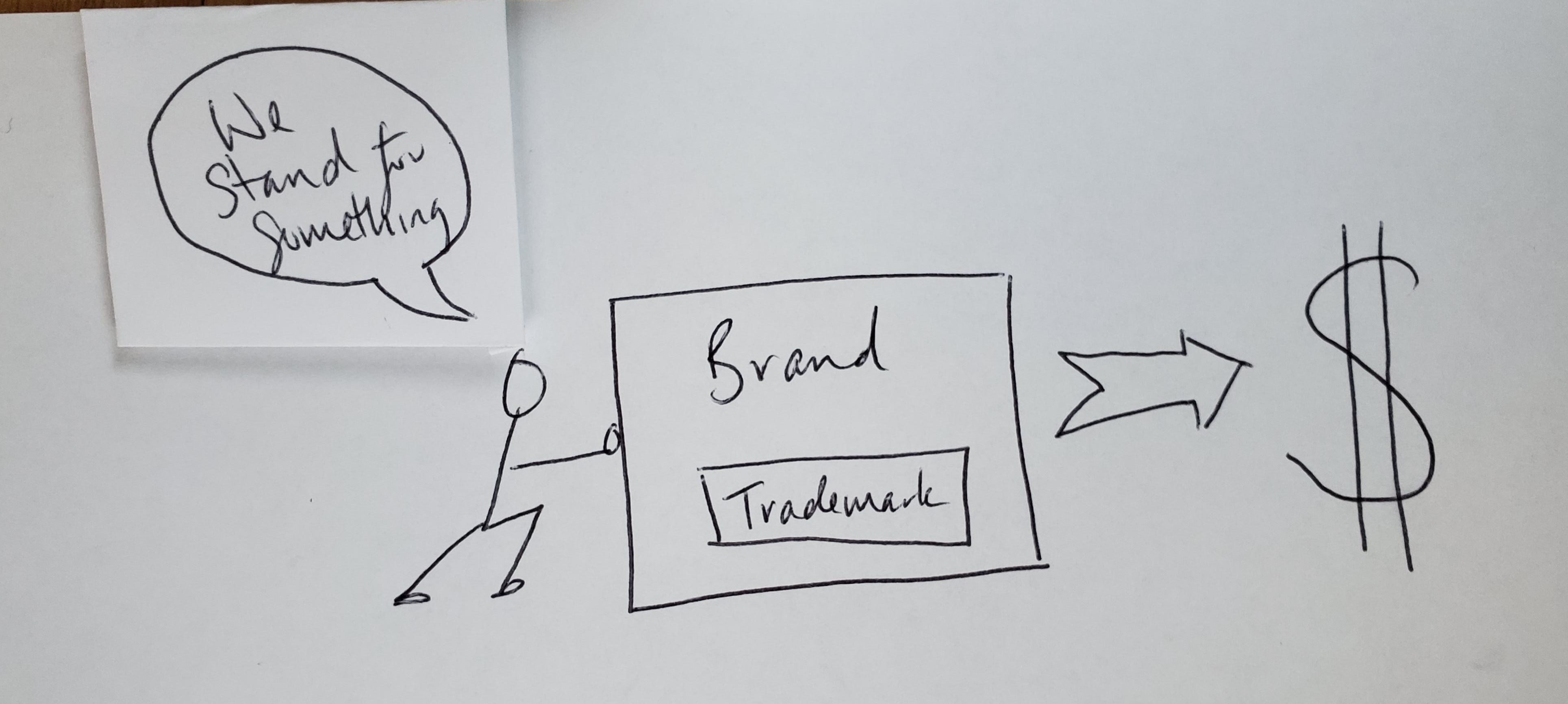Speaking at the Deutsche Bank Global Consumer Conference, Unilever’s CEO Alan Jope said: “We believe the evidence is clear and compelling that brands with purpose grow. In fact, we believe this so strongly that we are prepared to commit that in the future, every Unilever brand will be a brand with purpose.”
That seems to me to reflect a profound shift in how companies see the roles of their brands and highlights the difference between a “brand” and a trademark.
Trademarks indicate the source of a good or service. A trademark or service mark includes any word, name, symbol, device, or any combination, used or intended to be used to identify and distinguish the goods or services of one seller or provider from those of others, and to indicate the source of the goods or services. It is the “thing” that lets someone know, “Hey, that’s what I bought last time, and I know I can expect something similar if I buy it again.”
It may be the same exact thing (I bought a bottle of shampoo this time, and I bought the same exact stuff the next time.) or it can be related (I really liked their shampoo; I think I’ll try their lotion!). But whatever it is, I have confidence that the feelings about my past experiences will be repeated because I know it is coming from the same source. I know this because it tells me it is the same by its trademarks.
I see branding as something related but slightly different. Branding is the story with the trademark being part of the expression of that story. The trademark is the book’s title, but branding is the teaser about the story you are going to experience. Let’s do an example, because you all now I love a fun example.
I just came up with a new perfume targeting entrepreneurs. It has notes of hope, promise, dedication and a whiff of extreme bouts of momentary panic. I want to make sure that it speaks to my target audience so my marketing shows that I know their pain and their joys. It has lasting power for those long days of running around. It comes in two sizes of bottles: One that is small enough for carry-on air travel for all those trips, and one big enough for home that you don’t have to keep ordering it because who has time for that? With it on, you have confidence and calmness. You know you got this. Why? Because you bought into my story. That’s branding.
The shape of the bottle, the name of the product, the logo connected so that you know that you are buying my perfume instead of a cheap knock-off – those are my trademarks. Those trademarks should all reflect my story. They are key indicators, but they need more to move the product.
So, back to Unilever. They are saying their story is more than just how well you do if you smell good and get clean thanks to Dove soap. They are saying it is more than just how you and their product interact. It is about how the brand interacts with the world. And, they are betting that is what their consumers want. You don’t just want to feel calm and confident thanks to my perfume; you want to know that others are doing the same thanks to my perfume. And not only because they bought into my story, but because I am addressing a societal issue. I am moving the needle on something. Maybe it is supporting women in entrepreneurship; maybe it is helping people address stress in their lives in a healthy way. Whatever it is, it isn’t just because they feel better using my product because they like the smell. It’s bigger than that.
Sounds good, but it is tricky. What if the company’s customer doesn’t like the chosen purpose? The company is picking sides and are saying that is OK if you don’t agree. If you don’t, you aren’t meant to be a customer of ours. That’s not for the faint of heart, but it can be very powerful when customers do connect to the story. It can create passionate loyalty or vehement opposition. Therefore, be thoughtful with your branding, especially when going forward with purpose-branding. It’s more than a logo.

